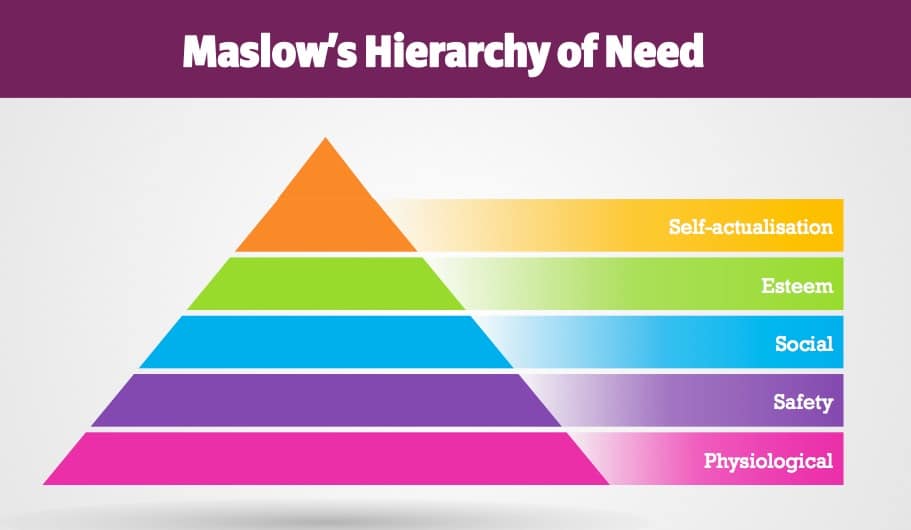For 19 years, Greats Places to Work and Fortune magazine have been printing The 100 Best Companies to Work For list. Surprisingly, the distinguishing theme underpinning all of the best companies is not their fancy freebies, parties or lavish annual leave policies. It’s how much they trust their coworkers and managers.
Companies that scored highly for trustworthiness also finished first for metrics on higher profitability, revenue growth and stock performance. But just like people, these organisations are not perfect. The research uncovered major discrepancies between the experiences of those on the frontline, as well as differences between gender, ethnicity and even full-time versus part-time workers. Next year, the research will focus on companies that have instilled trust more evenly across their whole organisation to bring the best out of everyone from the factory floor to the corner office.
What’s becoming increasingly obvious is that organisations that have company leaders right down to front-line workers who all embrace the value of a candid and open exchange of ideas and information, create highly functional and profitable enterprises.
After all, it’s trust that enables different people within an organisation to consistently rely on each other. It’s trust that enables your customers and other stakeholders to believe that you will deliver on your promises and behave responsibly. It’s trust that enables a company or brand to bounce back after a crisis. And it’s trust that enables an organisation to change and grow.
Yet, very few organisations strategically improve trust in order to improve employee engagement. One of the problems is that because trust is an emotional issue it’s hard to see, let alone fix in organisations because for most leaders looking at a workplace problem through the lens of trust is not in their sphere of capabilities or even in their language. Even when they do realise trust is a problem, they have a different frame of reference on trust compared to other leaders making it tricky for everyone to know the best steps forward. Often leaders, waste time and headspace focusing on the wrong trust elements or not even fixing trust at all.
Here are four common leadership frustrations that are all signs of trust issues that negatively impact workplace culture (and how to fix them).
1. Working around People, not with People
A common leadership gripe is that newly formed teams (and even existing) operate more like a collective of individuals rather than a team. Team members prefer working with those they know and avoid involving newcomers, the leader or even those with different job titles. Email is preferred to discussions and the most knowledgeable person in the team is rarely consulted. The result is that people work in different directions, make poor-quality decisions and rarely trust each other.
On the surface, these teams appear to be operating at a decent level. It’s only when leaders start comparing the outputs of a few teams together that the stark difference between performance become apparent. High trust teams get more done and execute more precisely.
According to the CEB Corporate Leadership Council, engaged teams grow profits three times faster than disengaged ones. What award-winning workplaces have found is that encouraging more inclusivity within teams requires leaders who know how to create psychological safety and increase trust, in order to eliminate the differences in employees’ experiences and actions.
2. Fear of Relying on Others
Following on from teams is the even bigger issue of departments and units not collaborating together. Research by Harvard Business Review reported that only 9% of managers feel that they can rely on cross-functional colleagues all of the time, and only 50% say they can rely on them most of the time. Managers also say they are three times more likely to miss performance commitments because of insufficient support from other units than because of their own teams’ failure to deliver.
When managers cannot rely on colleagues in other functions and units, they undermine execution by duplicating effort, letting customer promises slip, delaying their deliverables or passing up attractive opportunities. It’s also one of the reasons why business decision-making at most organisations is slowing down. Yes, that’s right. Despite the need to change quickly and be nimble, many companies are making slower decisions than seven years ago.
According to another CEB study, hiring a new employee takes on average 63 days up from 42 in 2010. The average time to deliver an IT project from start to finish is 10 months, up from 9 months in 2010. While the average time involved in a B2B sale is up 22% over the same time period.
While technological change may cut through the silos of traditional businesses it actually makes decision-making more difficult. Where one or two people used to sign off on a key decision, it may now require three or four or five. Matrixed organisation might be the standard among companies, but the real kicker is that most haven’t worked out how to make it work without gumming up the works.
In order to encourage departments to trust each other, it requires the CEO to constantly reinforce the importance of being part of an organisation beyond geographical, business unit or functional identity. Driving a “one firm” focus that moves people beyond narrow self-interests, in order to commit to shared goals such as faster decision-making is key. A good place to start is to focus on communication that discusses perceived risks (such as conflicting incentives) and how to reduce them, shared group identity and interests between groups (see 5 Steps for Increasing Collaboration across Functions for more).
3. Avoiding Delegation
One of the most important capabilities of a successful leader is being comfortable with delegating work. This makes them more effective because they get more work done and let their direct reports know that they are confident in their abilities to deliver (which increases trust within the relationship).
Leaders who avoid delegating tend to rely on themselves falsely believing only they are capable of doing the work. Over time, they feel alone, even betrayed by the organisation, because they feel overworked and overwhelmed. At the same time, they get categorised as being a micro-manager, limiting career opportunities.
Managers who trust others and allow them to make mistakes have the luxury of time to focus on the bigger picture. Not only does it increase their job satisfaction, but those reporting to them feel empowered and more confident in their own abilities and even the leader. It creates a virtuous cycle where employees believe that there is meaning, connection and impact in their work which provides the platform they need to keep excelling at their job.
To encourage hesitant delegators put them on work projects that are bigger than anything they can do alone. Explain that the more they can accept help from others, the more they create a high trust environment, where they can rely on others and others can rely on them. Let them know that know that what got them to their current level of success is not enough to get them to the next level.
Teach them new skills around asking for feedback, ideas and aligning others to the vision and values and how to make the decision to trust. These are powerful tools for building trust and cultivating a culture of accountability.
4. Not Speaking Up
Executives and employees often nod their heads in agreement with a new initiative but fail to commit to because they don’t understand or believe in it. The result is a lack of accountability because they are not fully committed to the new strategy.
Humans are designed to avoid conflict. Both leaders and employees alike fear speaking up about their concerns or even alternative opportunities in case it makes them look stupid or unpopular (read How a Fear of Speaking up Derails Strategic Thinking for more).
It is an important leadership challenge to create a strong, shared culture where people are unified, to avoid a political and potentially adverse environment. The only way to do this is to create a psychologically safe space where people are free to be themselves, feel valued for their work, can challenge leaders (including the CEO), raise concerns, debate and solve issues. This creates a candid environment where alignment of thinking, innovation and collaboration can thrive.
It also remarkably improves accountability, a common issue when leaders don’t trust employees to perform. This can only occur when leaders trust their people and in return, employees trust them. It involves creating the right accountability structures, leaders providing explicit instructions and setting clear expectations, while also being accountable themselves and expecting accountability in return.
Getting Ready for a Collaborative Future
Research published in Harvard Business Review found that ‘‘the time spent by managers and employees in collaborative activities has ballooned by 50 percent or more’’ over the last two decades. Today, more than three-quarters of an employee’s day is spent communicating with colleagues, in order to get work done.
With technological advances increasing and change occurring at a rapid rate, the reality is that employees within an organisation need to rely on each other more, yet few companies actually consider how to address this specific issue, especially from a trust perspective. Some even accept it as a normal part of doing business and how people operate. Yet, employees who don’t trust each other indicate a poor performing, adversarial and political culture.
One way to look at it is every time an organisation has an interaction amongst employees, stakeholders or customers, it generates either trust credits or debits.
When there are positive interactions, where customers or employees believe they can rely on each other, trust credits start to accumulate. This forms trust capital, which is just like a bank account. The more trust is created the more employees and customers are prepared to give the organisation the benefit of the doubt and follow the leader. Generating optimal trust credits enables an organisation to operate with greater efficiency and speed through improved synergies across the company and within groups.
When there are negative interactions, trust is debited contributing to suboptimal levels of trust capital. This is when people become unwilling to cooperate resulting in slow decision-making, a lack of accountability, self-interested behaviours and difficulties meeting deadlines.
Trust capital fuels your organisational culture and impacts the speed under which you can execute. Often, business leaders don’t fully appreciate how much trust capital they have accrued and what they need to do to optimise their trust capital into something more beneficial for the company such as more employee accountability, faster decision making or better collaboration between units.
Overcoming trust issues begins with being aware of how your organisation builds trust with customers, employees and other stakeholders. You can discover whether your trust capital levels are helping your organisation move fast through change or inhibiting it. Take our Unlocking your Trust Capital Potential Levels assessment to see how you rate and what you can do about it.







